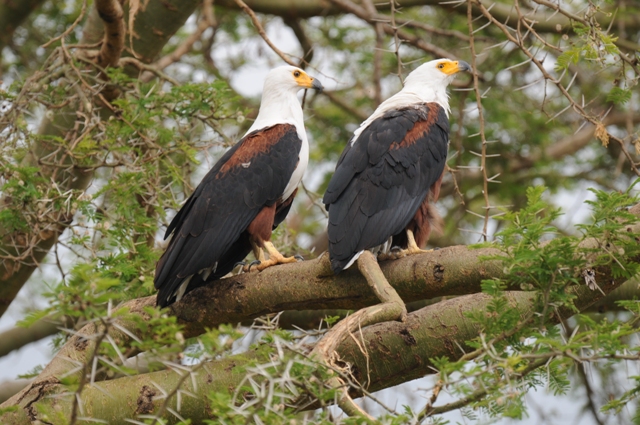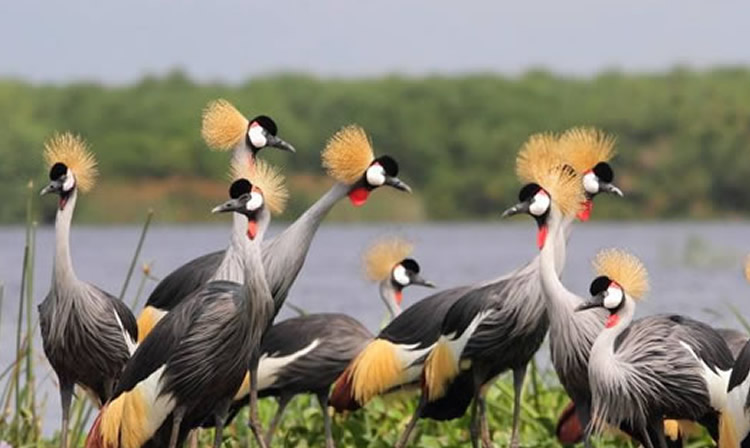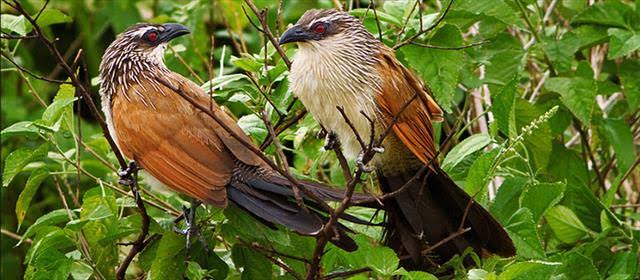Birding in queen Elizabeth national park

Birding at queen Elizabeth national park
Birding in queen Elizabeth national park : Queen Elizabeth national park, is situated in the south western part of Uganda the park ranges from the savannah ishasha plains to the humid rain forests, salty water lakes, fresh water lakes the acacia and euphorbia bushes low lads and wetlands. This has made Queen Elizabeth a top habitat for birds in Uganda.
The park contains over 600 bird species making it a must visit destination for birders to Uganda, Migratory birds are seen from November to April, however birds can be seen through out the year. Queen Elizabeth national park, observatory area was established in 1997 with the aim of studying Migratory and resident birds in the park.
Increasing awareness and guide training, developing Avid tourism by creating hides, walk away and birding trails. Some birds are endemic while other Migratory en route from Europe and summer nesting sites from South Africa. Queen Elizabeth nature has adapted birds to fit every variety of habitat. These birds are seen mostly at their special habituated areas that are listed below.

Maragambo Forest Area
This area is located on the right side of the western rift valley arm along the kichambwa escarpment species like the African fin foot, yellow bill, black coucal, red-throated wryneck, blue shouldered Robin chat, African mustached warbler, barbets, African emerald cuckoo, brown illadopsis and many more others
Katwe area
This area consists of lake munyanyange which is graced with numbers of lesser flamingos and few greater flamingos other water birds common here are; white breasted nigro-finch, chestnut wattle eye, marsh tchagra, Sulphur breasted bush shrike and black bishop among others
Katuguru Bridge Area
This area contains papyrus swamps around the Katuguru Bridge where the kazinga channel crosses from kasese district to Rubirizi district. This offers a habitat to birds such as, papyrus gonolek, white winged tern, pied kingfisher, malachite kingfisher, white winged warbler, greater swamp warbler and lesser swamp warbler among the rest.

Lake Kikorongo Area
This lake is an extension of lake George an is and habitat to waterfowls most species seen here are; knob billed duck, African jacana, yellow wagtail, sacred ibis, black crake, shoebill and saddle billed stork from the rest.
Kasenyi Area
This famous tourist spot with outlying savannah consists of species such as; black belied bustard, flapet lark, white tailed lark, palm but culture, long created eagle, croaking cisticola, hooded vulture, white backed vulture, brown backed scrub Robin, sitting cisticola, ripeols griffon vulture and grey backed fiscal from the rest of other numerous birds.
Ishasha Sector
This area is most known for tree climbing lions but doesn’t necessarily stop it from being a habitat to some to bird species such as palm but culture, shoebill, grey kestrel, African wattled plover, African green pigeon, cisticola, martial eagle, African crowned eagle among the rest.

The Mweya Peninsular Area
This area lies next to the Kazinga channel to the far lake Edward most bird species seen here are African morning dove, grey headed kingfisher, swamp nightjar, little bee eater, Swift’s, swallows, Martins, Nubian woodpecker and swamp fly catcher among many other species.
Birding reservations in Queen Elizabeth can be done at Katwe tourism information center.


